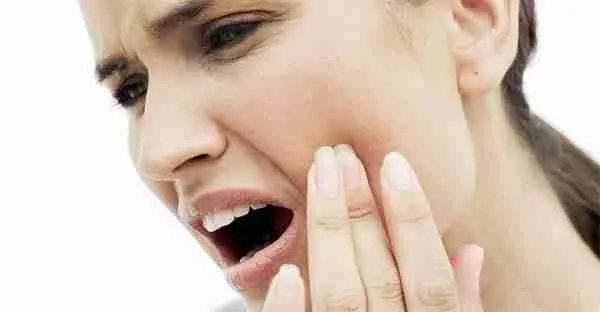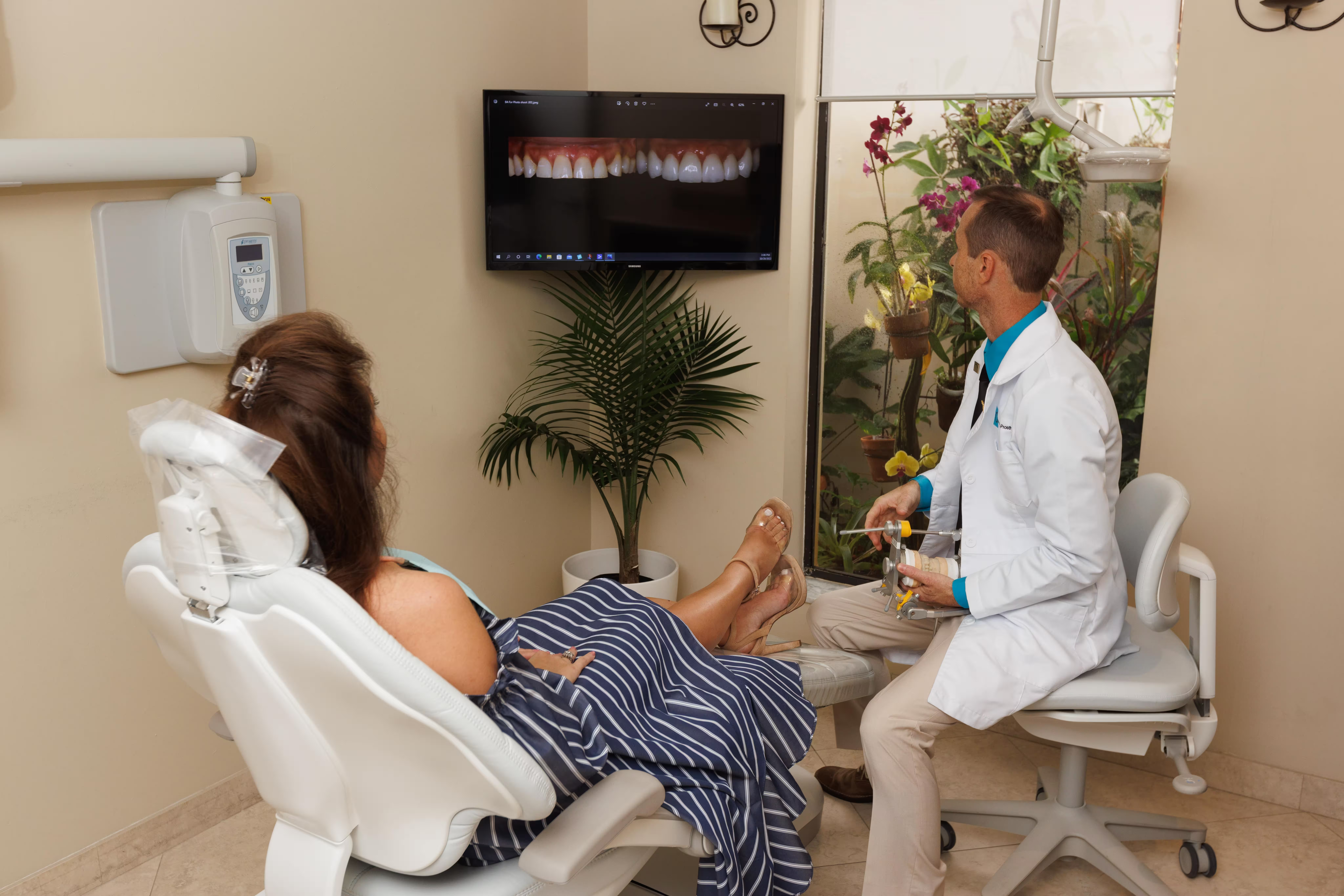
A persistent toothache can quickly transform an ordinary day into an unbearable experience, leaving you searching for relief and answers. Whether it’s a sharp, shooting pain that strikes without warning or a dull, throbbing ache that refuses to subside, dental pain demands immediate attention and professional care.
At Ocean Breeze Prosthodontics, Dr. Nicholas Goetz and Dr. Kathryn Gavalas Kaleel understand the urgency and discomfort that comes with dental pain. Our comprehensive approach to emergency dental care ensures you receive prompt, effective treatment to address both the immediate pain and underlying cause of your toothache.
Tooth pain rarely occurs without reason. The pulp inside your tooth contains nerves, blood vessels, and connective tissue that can become inflamed or infected when bacteria penetrate through cracks, cavities, or damaged dental work. This inflammation creates pressure within the confined space of your tooth, resulting in the intense pain you’re experiencing.
Common causes of toothaches include deep decay that has reached the tooth’s pulp, cracked or fractured teeth, worn fillings or crowns, gum disease, and dental abscesses. Sometimes, grinding or clenching your teeth can also lead to significant discomfort, especially if you have existing dental work or compromised tooth structure.
Not all tooth pain presents the same way. Sharp, stabbing pain when biting down often indicates a crack or fracture, while constant throbbing suggests possible infection. Temperature sensitivity to hot or cold foods and beverages may signal exposed tooth roots or compromised enamel. Swelling around the affected tooth, fever, or a foul taste in your mouth are serious symptoms that require immediate professional attention.
When a toothache strikes, your first priority should be contacting our office for an emergency appointment. While waiting for treatment, you can take over-the-counter pain relievers as directed on the package, rinse gently with warm salt water, and apply a cold compress to the outside of your cheek to reduce swelling.
Avoid placing aspirin directly on the tooth or gum tissue, as this can burn the soft tissues. Similarly, extremely hot or cold foods and beverages should be avoided, as they may intensify your pain. If you have a visible cavity or crack, avoid chewing on that side of your mouth until you can receive professional treatment.
Dr. Goetz and Dr. Gavalas approach each toothache with thorough examination and advanced diagnostic techniques. Digital X-rays help identify the exact source of your pain, whether it’s decay, infection, or structural damage. Based on our findings, treatment options may include dental fillings for cavities, root canal therapy for infected pulp, crowns for cracked teeth, or other specialized procedures.
For patients with dental anxiety, we offer various comfort options to ensure your treatment is as comfortable as possible. Our team’s extensive training in both general and specialized dentistry means we can address complex cases that might require referral elsewhere, providing you with comprehensive care under one roof.
When infection is present, prompt treatment becomes even more critical. Left untreated, dental infections can spread to other parts of your body, creating serious health complications. Our emergency protocols ensure you receive the care you need when you need it most.
While immediate pain relief is your primary concern, preventing future toothaches protects your long-term oral health and saves you from unnecessary discomfort. Regular dental examinations allow us to identify and treat problems before they become painful emergencies. Professional cleanings remove bacteria and plaque that contribute to decay and gum disease.
Daily oral hygiene practices, including brushing twice daily with fluoride toothpaste and flossing regularly, significantly reduce your risk of developing cavities and gum disease. If you grind or clench your teeth, especially at night, a custom night guard can protect your teeth from excessive wear and potential cracking.
Avoiding hard foods that can crack teeth, limiting sugary snacks and beverages, and not using your teeth as tools all contribute to better dental health. If you participate in sports, wearing a custom mouthguard protects your teeth from injury that could lead to future pain and complications.
Certain symptoms require immediate professional attention, even outside regular office hours. Severe, constant pain that interferes with sleep or daily activities, significant facial swelling, fever associated with dental pain, or trauma to your teeth or mouth all warrant emergency treatment.
If you’ve lost a filling or crown, try to keep the area clean and contact our office as soon as possible. Temporary dental cement, available at most pharmacies, can provide short-term protection until you can receive professional treatment.
Beyond emergency treatment, our practice offers comprehensive preventive and restorative services to maintain your oral health. Dr. Goetz’s specialized training in prosthodontics means he can address complex restorative needs, while Dr. Gavalas provides exceptional general dentistry care for patients of all ages.
Our commitment to continuing education ensures we stay current with the latest techniques and technologies in dental care. From routine cleanings and preventive treatments to advanced restorative procedures, we provide the full spectrum of dental services to keep your smile healthy and pain-free.
Don’t let a toothache disrupt your life any longer than necessary. Our experienced team at Ocean Breeze Prosthodontics is ready to provide the prompt, effective care you need to eliminate your pain and restore your oral health. We understand that dental emergencies don’t follow convenient schedules, which is why we prioritize urgent cases and work to accommodate patients experiencing significant discomfort.
Located in Delray Beach, our practice combines years of experience with a genuine commitment to patient comfort and care. Dr. Nicholas Goetz and Dr. Kathryn Gavalas Kaleel bring extensive training and expertise to every case, ensuring you receive the highest quality treatment available. Contact Ocean Breeze Prosthodontics today at (561) 265-1998 or visit our contact form to schedule your emergency appointment. Your comfort and oral health are our top priorities, and we’re here to help you achieve lasting relief from dental pain.
Teeth Veneers FAQ
Porcelain veneers are very strong and resilient. You will be able to eat and bite normally. However, just as with your natural tooth, you should always avoid biting on hard foods or ice, for example. You should also avoid harmful practices such as opening packages or bottles with your teeth. Taking care of your veneers will avoid cracks or damages.
Not only are veneers strong, but they are also very durable. They could last 10 to 20 years, depending on your oral care, your bite, and the quality of the work in your mouth, among other factors. Keeping good oral hygiene and steady dental checkups will absolutely help your veneers last longer.
Depending on the amount of veneers you need, anesthesia may be used during the preparation of your teeth. Many patients prefer the usual local anesthesia to feel comfortable during the treatment considering that a thin part of your tooth surface needs to be removed. But your dentist will always take into account your needs and preferences.
For veneers to fit perfectly over your worn or damaged tooth, a very thin layer of tooth enamel must be removed. Because of this, the process is irreversible.
Your dental insurance company may allow coverage of cosmetic procedures if, for example, the procedure is part of a reconstructive surgery. However, most dental plans do not usually provide benefits for cosmetic procedures as they are considered optional aesthetic treatments. But you should always ask what procedures your dental insurance covers.
If you grind your teeth at night, chances are that you will damage your teeth whether you have veneers or not. To avoid damaging or breaking the veneers, your dentist will recommend to wear a protective bite guard to lessen the pressure on your veneers while you sleep
**Requested time is not final until you receive confirmation from our office. Please do not submit any Protected Health Information (PHI).
"*" indicates required fields

Ocean Breeze is a dental office located in Delray Beach, Fl. specializing in prosthodontic treatments as well as general and cosmetic dentistry services. Dr. Nicholas Goetz and his team are thrilled for the opportunity to provide patients with the most advanced and comprehensive dentistry they deserve.
Copyright © 2025 Ocean Breeze
**Requested time is not final until you receive confirmation from our office. Please do not submit any Protected Health Information (PHI).
"*" indicates required fields